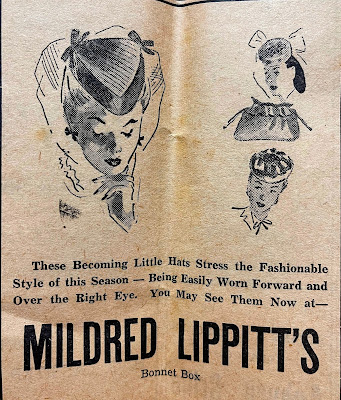I've written a number of posts on this blog related to medical history in Alabama, especially Birmingham; and also many on the history of Pelham, where we live. You can find a list of some of the Magic City medical history items here. A list of Pelham postings is here. Both lists were completed in 2017, so both need updating--maybe someday. This piece examines a bit of Pelham's medical history.
As I sometimes do on a cold winter evening, I recently dipped into the 1900 volume of the Transactions of the Medical Association of the State of Alabama. In addition to administrative materials and papers presented at the annual meeting, this publication included each year a county-by-county listing of the doctors in Alabama. Each listing was divided into those who were members of the medical society and those who were not. Thus the Transactions, which were published from the 1850s into the 1920s are something of a snapshot each year of the state's medical profession.
Below you can see a page from the 1900 volume that gives doctors for Shelby County. Listed first are the officers of the county society, then the members and finally doctors who had not joined. Each entry often includes medical college and year of graduation as well as the year of certification to practice in Alabama.
In that listing are three doctors in Pelham in 1900. Here I've included what I found about these men.
Garland Henry Smith
Smith was born on July 10, 1860, and graduated from the Medical College of Alabama in 1889. Wayne Flynt's University of Alabama Medical Alumni Association 1859-2003 lists him in class of 1890 & being from the community of Kennedy in Lamar County. At the time the medical school was in Mobile, and operated there from 1859 until 1920 when it was moved to Tuscaloosa and then Birmingham in 1945. According to the Transactions he was certified by the Shelby County medical board in 1890.
He apparently moved around the county. The 1890 and 1896 Transactions put him in Siluria. The 1900 volume puts him in Pelham. The 1902 publication has him living in Ganadarque, which had a post office from 1895 until 1903, the name having been changed from Newala in 1895. Finally, the American Medical Association's Directory of Deceased Physicians 1804-1929 lists him in Saginaw at the time of his death on September 2, 1905. He seems to have been a member of the medical society during his career in Shelby County.
In 2015 I did a blog post on the Pelham Cemetery; several physicians who practiced in the town are buried there. That includes Smith; you can see his marker via Find-A-Grave below. The photo there was better than mine! Pearl Denson wife of of Dr. G.H. Smith is also buried in the Pelham Cemetery; a photo of her grave is also in the blog post. She died in 1935. Since her maiden name was Denson, is she related to the next Pelham physician on our 1900 list?
Eli Forest Denson
Denson was born on February 15, 1853, and graduated from Vanderbilt medical school in 1879. He was certified by the Shelby County board in that same year. He appears in various volumes of the Transactions through 1902, never as a member of the society. Denson does not appear in Shelby County in the 1907 volume, so he may have moved out of Pelham at some point. He died on July 14, 1910, age 57 and is buried in the Pelham Cemetery. His wife Emma lived until 1937 and is also buried there.
Joseph Madison Johnson
Johnson was also a Vanderbilt graduate, finishing in 1883. He was certified by the Shelby County board in that same years. In addition to 1900, I found him in the 1896 Transactions but not in 1902 in Pelham. I did not find him via U.S. Census records, Find-A-Grave or the AMA directory of deceased physicians. He was not a society member in those years. Otherwise, Johnson is a mystery.
A William Rufus King Johnson, 1880 graduate of Atlanta Medical College, and certified by the county board in that year, shows up in Pelham in the 1889 and 1890 Transactions and is not a society member. He does not appear in the city in the 1896 or 1898 Transactions.
The American Medical Association's Directory of Deceased Physicians 1804-1929 has a listing for him. with some additional and different information. He was born May 12, 1854, in Highland, Alabama. Johnson graduated from the Atlanta Medical College in 1878 and certified in Alabama that same year. He was certified to practice in Texas in 1907, and lived in several places in that state until his death in Mt. Pleasant of a cerebral hemorrhage on October 30, 1928. Was he related to Joseph Madison Johnson?
Several other doctors are known to have practiced in Pelham in the early 20th century. Pelham was not incorporated at the time, but population figures for the Pelham "precinct" can be found in the Alabama Official and Statistical Register 1919. In 1900 602 people lived there and 1100 in 1910.
I've written a blog post about John Payne, who is also buried in the Pelham Cemetery. Although a physician who grew up in Shelby County, and was certified by that county's board, his practice before his untimely death seems to have been in Birmingham.
Young & Company's Business and Professional Directory of Alabama 1910-1911 lists an A.W. Horton as a physician in Pelham. Dr Andrew W. Horton died in 1910 at the age of 37 and is buried in the Pelham Cemetery.
The American Medical Directory for 1916 has a doctor listed in Pelham, Braxton Bragg Pugh. He died in Uniontown in Perry County in 1938, so he may not have been in Pelham long.
The American Medical Directory for the years 1912, 1914, 1918 have no doctors in Pelham.
Transactions of the Medical Association of the State of Alabama, 1900 via the Internet Archive

























































